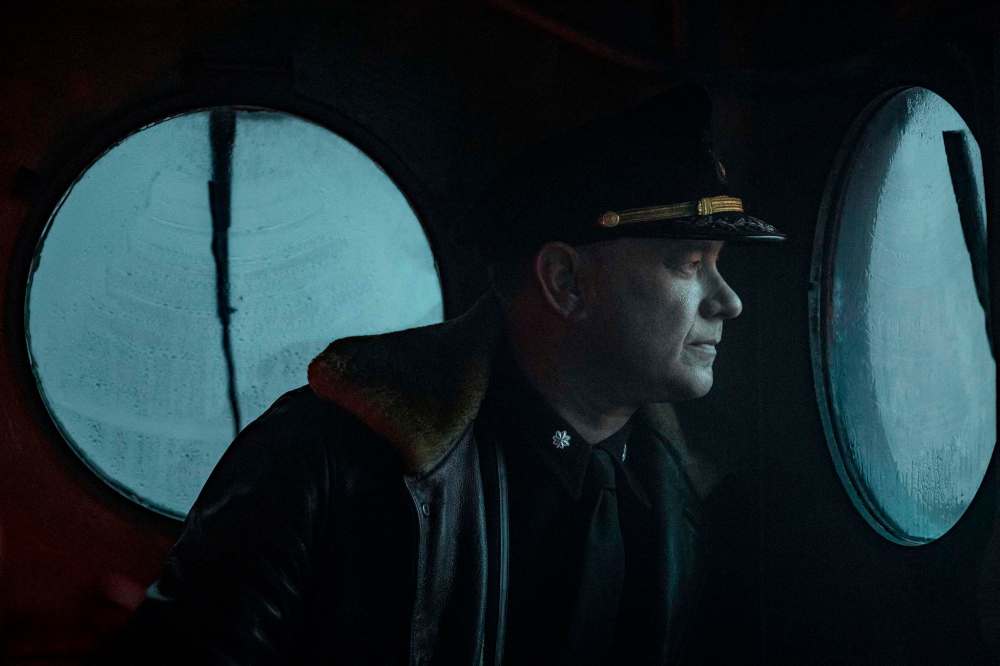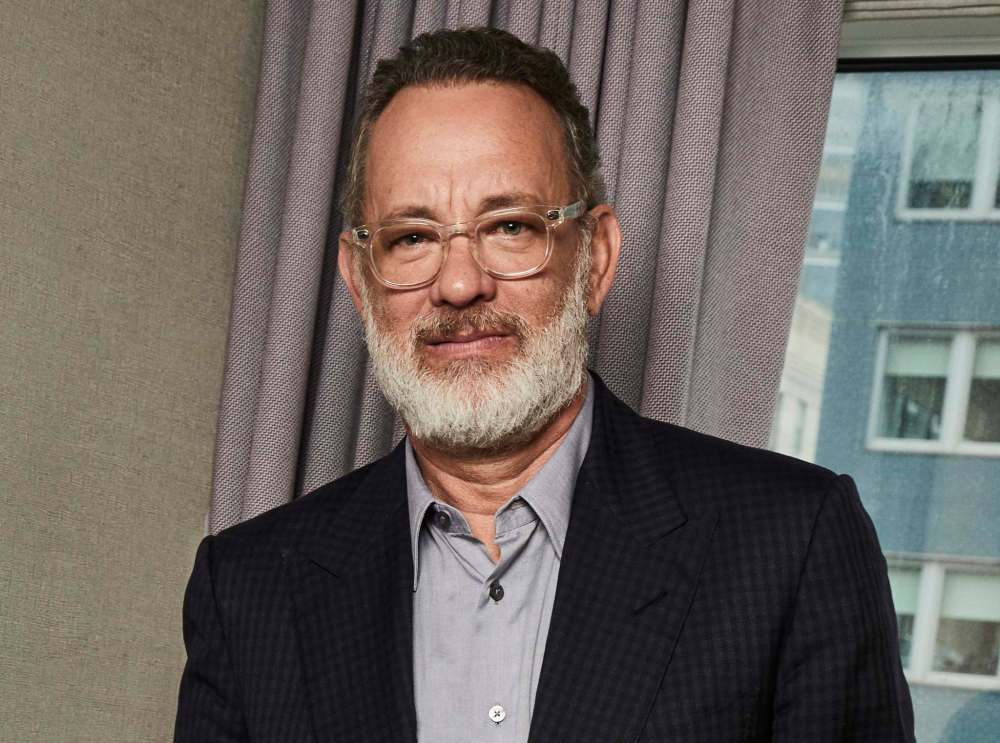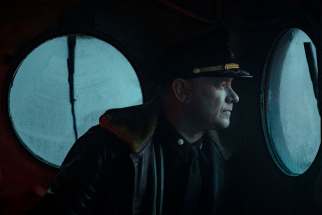Greyhound offers shipshape lessons in competence
Read this article for free:
or
Already have an account? Log in here »
To continue reading, please subscribe:
Monthly Digital Subscription
$19 $0 for the first 4 weeks*
- Enjoy unlimited reading on winnipegfreepress.com
- Read the E-Edition, our digital replica newspaper
- Access News Break, our award-winning app
- Play interactive puzzles
*No charge for 4 weeks then billed as $19 every four weeks (new subscribers and qualified returning subscribers only). Cancel anytime.
Read unlimited articles for free today:
or
Already have an account? Log in here »
Hey there, time traveller!
This article was published 15/07/2020 (1527 days ago), so information in it may no longer be current.
Greyhound, the new Tom Hanks war movie (streaming on Apple TV+), is getting solid but not stellar reviews. It’s being called “steady,” “workmanlike,” “efficient,” “competent but unremarkable.”
And that’s fitting somehow. With its tight focus and deliberately modest approach, this Second World War naval drama is a sincere, straight-ahead tribute to just doing your job.
This is not a Big Statement picture. All the action is contained aboard one ship, the USS Keeling (codenamed Greyhound), over 48 hours, as it attempts one very specific mission: escorting a convoy of merchant ships and troop carriers through what is called the Black Pit, the dangerous stretch of the North Atlantic where they are without air cover.

Cultural commentators often talk about so-called “competence porn.” As audiences, we enjoy watching characters doing something very specific and doing it well. This explains the fascination with heist flicks, astronaut movies, political procedurals.
At this chaotic and uncertain time, the lure of competence takes on particular weight. Greyhound is not a great movie, but in its stolid, unshowy way, it seems crafted to respond to a current cultural craving: We want to watch people who know what they need to do and then go ahead and do it, without fuss or fanfare.
The movie was slated to open in theatres on Father’s Day weekend, before the pandemic saw it moved to Apple’s streaming service and rescheduled to a later date. That initial date seems perfect: Not only is this a total Dad Movie, but Hanks, who stars as Cmdr. Ernest Krause and also adapted the script from C.S. Forester’s The Good Shepherd, is often called America’s Dad.
Hanks excels at playing decent, reliable men like Mr. Rogers and Capt. (Sully) Sullenberger. Just seeing him here with the letters “CAPT” stencilled on his helmet is heartening.
Krause is a man of faith — he says grace before he drinks his coffee, even mid-attack — and he is earnest, as his first name suggests. Reprimanding two young sailors for fighting, he says, “I will have no more fisticuffs on my ship. Restore the relationships you have damaged, and fill me with peace.” (The boys, as you might imagine, look slightly baffled.)

Krause’s heroism, then, isn’t of the usual tough-talking, square-jawed, all-American type. For one thing, Hanks’s face has always been soft, an Everyman visage of amiable curves and bumps. His character’s heroism is very quiet, rooted in humility, tenacity, composure and, yes, competence.
This quietness extends to the moviemaking. Greyhound feels purposely old-fashioned. It’s so grey it almost seems as if it’s shot in black-and-white. Interior scenes might have a red or green cast, but outside it’s all grey seas and grey skies, barely distinguishable in their steely cold. The film is also quaint in its brevity. The action clocks in at an economical 82 minutes, which is rare in an age when even idiot comedies run two-and-half hours.
The battle scenes aren’t spectacular. There is no big-canvas Dunkirk or 1917 stuff here. As the USS Keeling confronts a pack of German U-boats, the action is modestly scaled and carefully concentrated, with a tense, terse focus on tactics and the particular rhythms of cinematic naval battles.
There’s the ping-ping of the sonar, the hushed listening, the intent glances of the men as they watch their captain on the bridge, trying to gauge the level of danger.
There’s the nautical jargon that can sound like poetry. (“Right handsomely to 096.” “Return to your station at best speed.” “Boatswain, sound general quarters.” Or as another of the convoy’s captains says, his ship listing after being hit by a German torpedo, “We’ll do all the sea allows.”)
Above all, there’s repetition. Almost everything in Greyhound is said twice as it’s relayed back and forth across the chain of command. This is realism, of course. Orders are repeated so it’s clear everyone has heard and understood.

But the repetition is also a deliberate statement, to remind us that competence isn’t so much genius as hard, dull slog. Competence is doing in the stress of the moment what you have already practised a thousand times. As Krause says when he comes across a sailor temporarily frozen with fear: “Training, son.”
Even in the brief pauses between battle scenes, almost all the dialogue involves practical things like rustling up ham and eggs and hot coffee. There is barely any background info here, beyond Krause’s brief flashbacks to the woman he loves (Elisabeth Shue).
Greyhound may be a limited movie. It’s doesn’t offer a profound statement on war. It doesn’t even tell us much about Commander Krause, beyond his doggedness and decency.
But it does succeed in conveying the rigorous, repetitious, slightly dull — but also weirdly mesmerizing — mechanics of competence. In this very particular field, Greyhound — like its central character — gets the job done.
alison.gillmor@freepress.mb.ca

Alison Gillmor
Writer
Studying at the University of Winnipeg and later Toronto’s York University, Alison Gillmor planned to become an art historian. She ended up catching the journalism bug when she started as visual arts reviewer at the Winnipeg Free Press in 1992.
Our newsroom depends on a growing audience of readers to power our journalism. If you are not a paid reader, please consider becoming a subscriber.
Our newsroom depends on its audience of readers to power our journalism. Thank you for your support.









